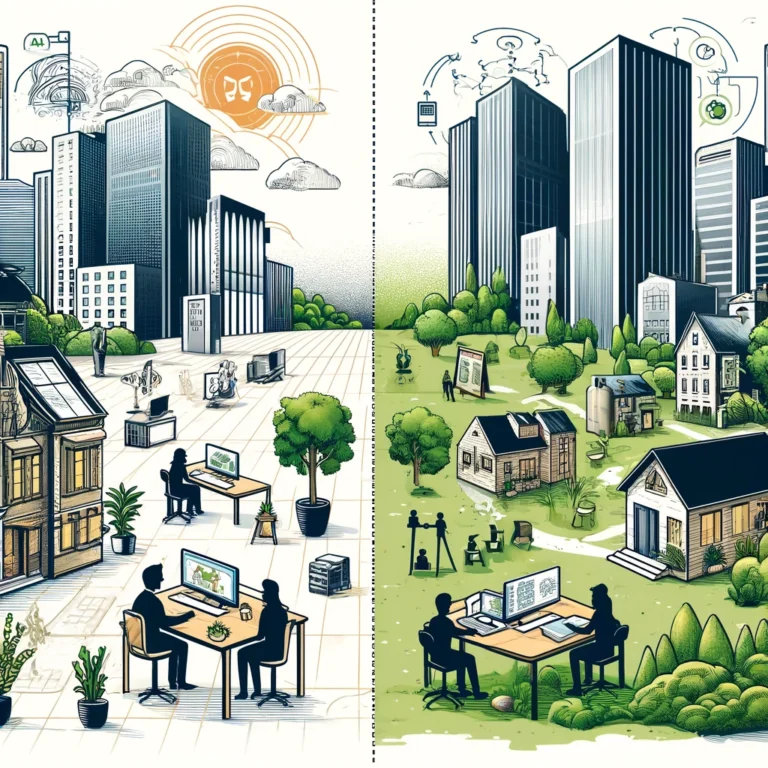The COVID-19 pandemic has brought significant changes to the way we live and work, with remote work becoming a permanent fixture for many organizations and employees. As remote work gains popularity, it is essential to consider its broader implications, particularly on urban development. This article explores the potential impact of remote work on urban areas, examining both the challenges and opportunities it presents.
Decline in Demand for Office Space
1. Shifts in Commercial Real Estate
One of the most immediate effects of remote work is the reduced demand for office space. Companies are reevaluating their need for large office buildings as employees work from home. This shift could lead to a decline in commercial real estate values, particularly in central business districts where office space has traditionally been in high demand.
2. Repurposing Office Buildings
As demand for office space decreases, cities may need to consider repurposing these buildings for other uses. Potential alternatives include converting office spaces into residential units, co-working spaces, or mixed-use developments that combine living, working, and leisure areas. This repurposing could help address housing shortages in many urban areas.
Changes in Urban Mobility and Infrastructure
1. Reduced Commuting
With more people working from home, there is likely to be a significant reduction in daily commuting. This reduction can alleviate traffic congestion, lower greenhouse gas emissions, and decrease wear and tear on urban infrastructure. Public transportation systems may also see reduced ridership, prompting cities to rethink their transportation networks and funding models.
2. Investment in Digital Infrastructure
The rise of remote work underscores the importance of robust digital infrastructure. Cities will need to invest in high-speed internet and reliable connectivity to support remote work effectively. Ensuring digital equity, where all residents have access to necessary technology and internet services, will be crucial for fostering an inclusive remote work environment.
Economic Implications for Urban Areas
1. Impact on Local Businesses
Local businesses that rely on office workers, such as restaurants, cafes, and retail stores, may experience a decline in patronage. This shift could lead to economic challenges for these businesses and require them to adapt their models to cater to remote workers who remain closer to home.
2. Opportunities for Suburban and Rural Areas
While urban centers may face challenges, suburban and rural areas could see an influx of residents seeking more space and a lower cost of living. This migration can stimulate local economies and drive demand for housing and services in these areas. However, it will also require careful planning to ensure sustainable development and prevent overburdening local resources.
Social and Community Impacts
1. Changes in Social Dynamics
Remote work can alter social dynamics by reducing face-to-face interactions among colleagues and in urban areas. Cities will need to find new ways to foster community engagement and social cohesion in a more dispersed work environment. This could involve creating more public spaces, community events, and digital platforms for social interaction.
2. Work-Life Balance and Mental Health
While remote work offers flexibility, it also blurs the boundaries between work and personal life. Ensuring that employees maintain a healthy work-life balance and have access to mental health support is essential. Urban areas can play a role by promoting well-being through access to parks, recreational facilities, and mental health services.
The rise of remote work presents both challenges and opportunities for urban development. As cities adapt to this new reality, they will need to rethink traditional models of work, transportation, and community building. By investing in digital infrastructure, repurposing office spaces, and supporting local businesses, urban areas can navigate these changes and emerge more resilient and inclusive. The future of urban development in the age of remote work will require innovative solutions and collaborative efforts to ensure sustainable and thriving communities.

